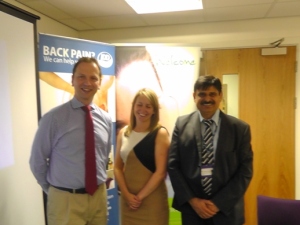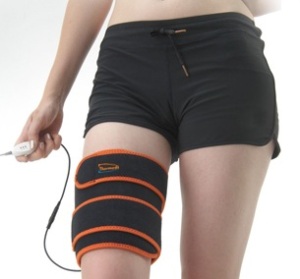Have you noticed that the primary sales tool in any weight loss or fitness programme is a before and after photograph?
There is always an eye catching and impressive before-after photo.
The before photo generally shows the unsmiling face (not here though! – see below) and the classic large belly.
The after photo shows a bright smiley face with either an exposed torso or the person standing in a pair of their old ill fitting trousers!
There are many different exercise programmes and diets but generally the key reason the programmes fail is because people give up.
Thinking about this, I wonder: is the act of standing in front of the camera – embarrassed and ashamed – and getting a photo taken a key factor in cementing someone’s commitment to stick to an exercise/diet plan?
In the goal-setting/ life coaching business, announcing your goals as a public statement of intent is quoted by leading experts as one of the cornerstones of reaching goals and achieving success. Is that what the before photo does?
So, alongside the weigh in, should anyone looking to get healthier and lose weight/ exercise get a set of before shots to paste around their house? If we want to have the ‘after-shot physique’, perhaps the starting point on that journey is actually taking some before-shots!
What lessons can clinicians take?
With easy access digital photography at our fingertips, could clinicians make more routine use of before shots to show starting posture and weight and thus help patients comply to a given exercise/rehab/posture corrections programme?
‘This is how you look now, here is the goal and this is how we want you to look’ As one saying goes ‘if you can see it, you can believe it’ and another says ‘if you can believe it you can achieve it’.
If you have an opinion, you can use the comment box below.
PS – In the photo I use above, the before shot actually shows the guy smiling … hmmm. I wonder, in taking the photo is that he knows what he is committing himself to do and he is smiling because he is excited by that prospect? I think that he has faith in the programme and by taking the photo he is committing himself to the end goal.
Often improvements in health are subtle and are revealed by the change in someone’s face. Patients can forget what they were like when they started, so this may really help them appreciate what you have done for them.
PPS This thought occurred to me as I wrote an earlier post about using Wall Calendars to help boost exercise compliance for spinal rehabilitation. I applied the idea from the Insanity Exercise Programme http://www.beachbody.com/product/fitness_programs/insanity.do?e=5b
Author: Stephen Small
Director, Steadfast Clinics Ltd
www.SteadfastClinics.co.uk
Steadfast Clinics is the international distributor of IDD Therapy spinal decompression, SDS SPINA, Accu SPINA devices, Thermedic FAR infrared therapy systems and HydroMassage machine [contact-form-7 404 "Not Found"]




